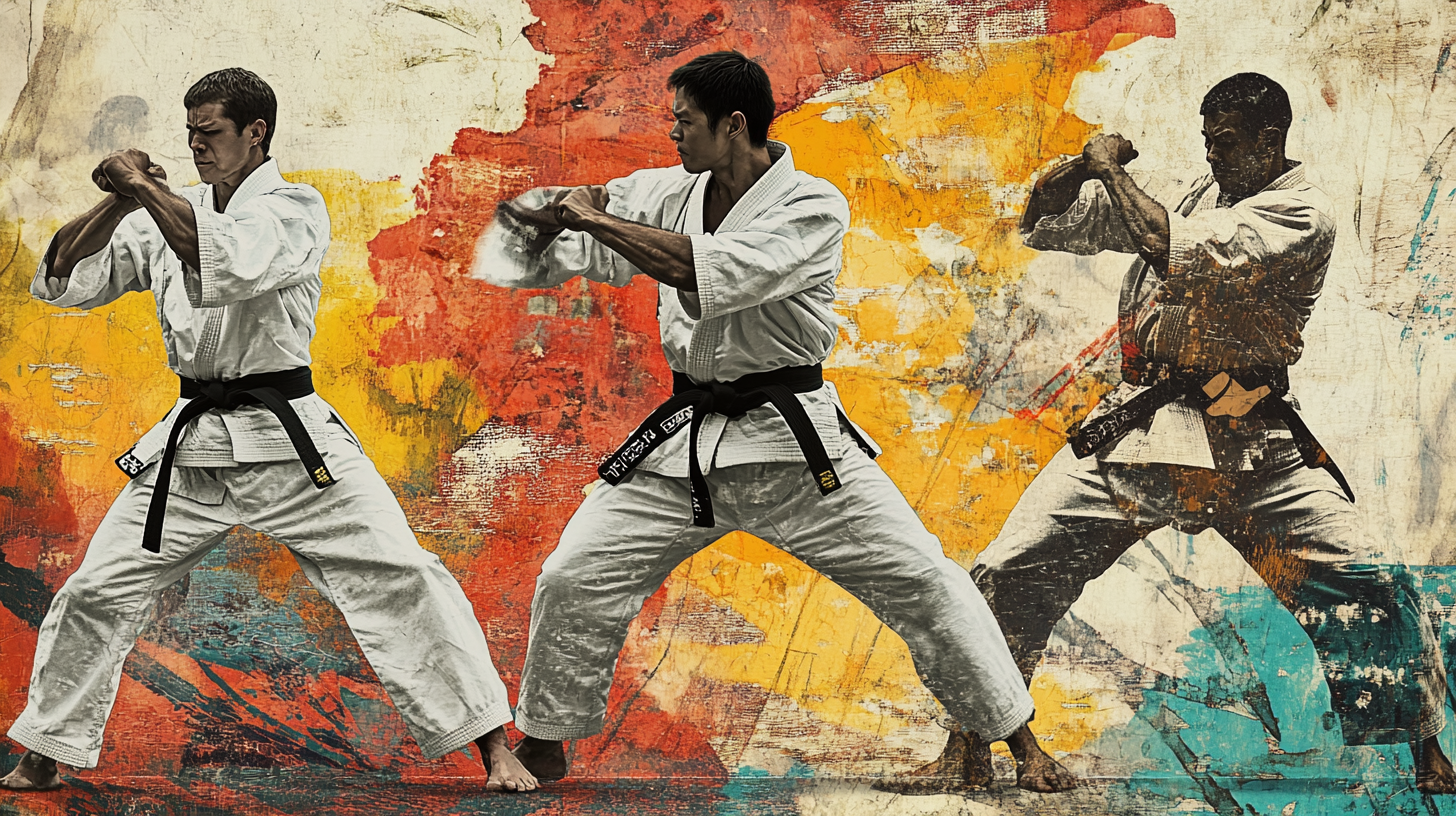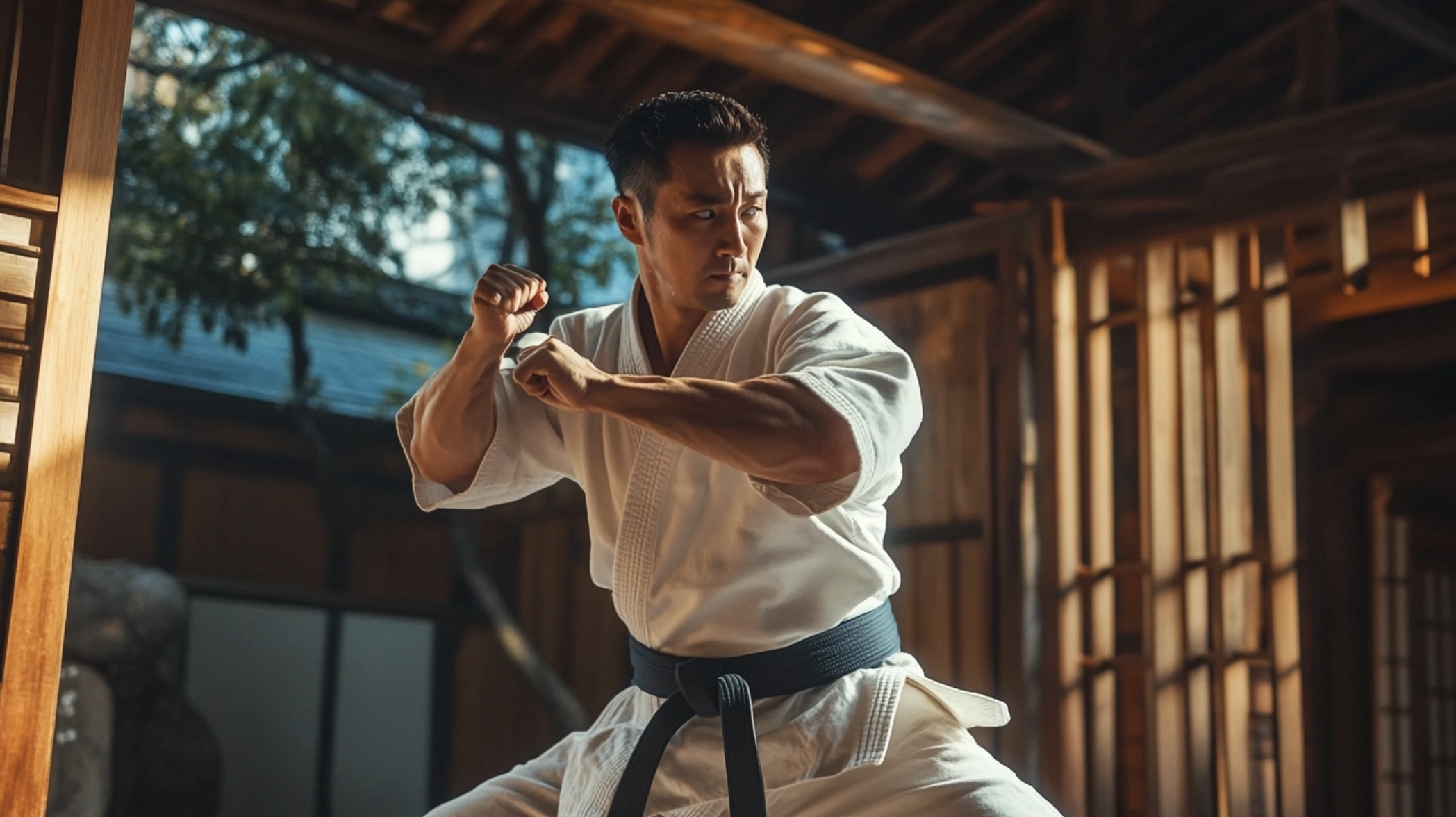
Karate is a popular martial art that originated in Okinawa, Japan, and has evolved into various styles, each with its techniques, philosophies, and training methods.
While all forms of karate emphasize discipline, respect, and self-defense, the different styles offer unique approaches to striking, blocking, and movement.
This blog will explore 15 types of karate, highlighting their key characteristics and what sets them apart.
Explore Different Types of Karate

1. Shotokan Karate
Shotokan Karate is one of the most widely practiced karate styles worldwide.
Founded by Gichin Funakoshi, it emphasizes long, deep stances and powerful, linear movements.
Shotokan is known for its focus on kata (forms), kihon (basics), and kumite (sparring).
- Founder: Gichin Funakoshi
- Key Features: Long stances, linear movements
- Best For: Traditional karate training, kata focus
2. Goju-Ryu Karate
Goju-Ryu Karate combines hard and soft techniques, emphasizing close-range combat and breathing control.
Founded by Chojun Miyagi, it incorporates circular movements and includes both striking and grappling techniques.
- Founder: Chojun Miyagi
- Key Features: Hard and soft techniques, close-range combat
- Best For: Balanced striking and grappling
3. Shito-Ryu Karate
Shito-Ryu Karate is known for its wide range of kata and the integration of both hard and soft techniques.
Founded by Kenwa Mabuni, it blends elements from Goju-Ryu and Shorin-Ryu, making it a versatile style with an extensive curriculum.
- Founder: Kenwa Mabuni
- Key Features: Wide range of kata, hard and soft techniques
- Best For: Comprehensive karate training
4. Wado-Ryu Karate
Wado-Ryu Karate, founded by Hironori Otsuka, emphasizes body shifting to avoid attacks rather than meeting force with force.
It blends traditional karate techniques with jujutsu principles, focusing on fluid movement and evasion.
- Founder: Hironori Otsuka
- Key Features: Body shifting, fluid movement
- Best For: Evasion, blending karate with jujutsu
5. Kyokushin Karate
Kyokushin Karate is a full-contact style known for its rigorous training and emphasis on physical conditioning.
Mas Oyama founded it with powerful strikes and real combat sparring, making it popular among those seeking a challenging martial art.
- Founder: Mas Oyama
- Key Features: Full-contact, rigorous training
- Best For: Physical conditioning, real combat experience
6. Shorin-Ryu Karate
Shorin-Ryu Karate, one of the oldest karate styles, emphasizes natural movement, speed, and agility.
Founded by Choshin Chibana, it focuses on short, quick stances and fast strikes, making it effective for self-defense.
- Founder: Choshin Chibana
- Key Features: Natural movement, speed, agility
- Best For: Self-defense, quick strikes
7. Uechi-Ryu Karate
Uechi-Ryu Karate is a traditional Okinawan style combining Chinese martial arts elements with Okinawan techniques.
Founded by Kanbun Uechi, it emphasizes circular blocks, close-range combat, and body conditioning.
- Founder: Kanbun Uechi
- Key Features: Circular blocks, close-range combat
- Best For: Traditional Okinawan training, body conditioning
8. Isshin-Ryu Karate
Isshin-Ryu Karate, founded by Tatsuo Shimabuku, blends elements from Shorin-Ryu and Goju-Ryu.
It emphasizes vertical punches, low kicks, and a natural, upright stance, making it practical for real-world self-defense.
- Founder: Tatsuo Shimabuku
- Key Features: Vertical punches, low kicks
- Best For: Practical self-defense, natural stance
9. Chito-Ryu Karate
Chito-Ryu Karate, founded by Tsuyoshi Chitose, combines Okinawan karate techniques with Chinese martial arts influences.
It focuses on short, powerful strikes, quick movements, and breathing control.
- Founder: Tsuyoshi Chitose
- Key Features: Short, powerful strikes, breathing control
- Best For: Balanced training, Chinese influence
10. Shorinji-Ryu Karate
Shorinji-Ryu Karate, founded by Kori Hisataka, integrates karate with traditional jujutsu techniques.
It emphasizes self-defense, joint locks, throws, and pressure point strikes, making it a comprehensive martial art.
- Founder: Kori Hisataka
- Key Features: Jujutsu integration, joint locks, pressure points
- Best For: Comprehensive self-defense training
11. Seido Karate
Seido Karate, founded by Tadashi Nakamura, focuses on personal development, discipline, and spiritual growth.
It combines traditional karate techniques with a strong emphasis on character-building, making it suitable for practitioners of all ages.
- Founder: Tadashi Nakamura
- Key Features: Personal development, discipline, spiritual growth
- Best For: All ages, character-building
12. Enshin Karate
Enshin Karate, founded by Joko Ninomiya, emphasizes practical self-defense and circular movements to off-balance opponents.
It’s known for using Sabaki, a strategy for redirecting an opponent’s force.
- Founder: Joko Ninomiya
- Key Features: Practical self-defense, circular movements
- Best For: Real-world combat, opponent redirection
13. Ashihara Karate
Ashihara Karate, founded by Hideyuki Ashihara, focuses on practical self-defense techniques, including striking and grappling.
It’s known for its logical approach to combat, emphasizing movement, timing, and positioning.
- Founder: Hideyuki Ashihara
- Key Features: Striking and grappling, logical approach
- Best For: Practical self-defense, movement and positioning
14. Okinawan Kempo Karate
Okinawan Kempo Karate is a traditional Okinawan martial art that combines karate with pressure point strikes, joint locks, and grappling techniques.
It emphasizes self-defense and practical applications.
- Origin: Okinawa
- Key Features: Pressure points, joint locks
- Best For: Self-defense, practical applications
15. Shukokai Karate
Shukokai Karate, founded by Chojiro Tani, is known for its speed and power.
It uses scientific principles to maximize the effectiveness of techniques.
It emphasizes hip rotation and body alignment to deliver powerful strikes.
- Founder: Chojiro Tani
- Key Features: Speed, power, scientific approach
- Best For: Maximizing strike effectiveness, speed training
Conclusion
Karate offers various styles, each with unique techniques, philosophies, and training methods.
Whether you’re looking for a traditional practice that emphasizes kata and discipline or a full-contact style that focuses on real-world self-defense, there’s a type of karate to suit your needs.
Understanding the differences between these styles can help you choose the right path for your martial arts journey.
